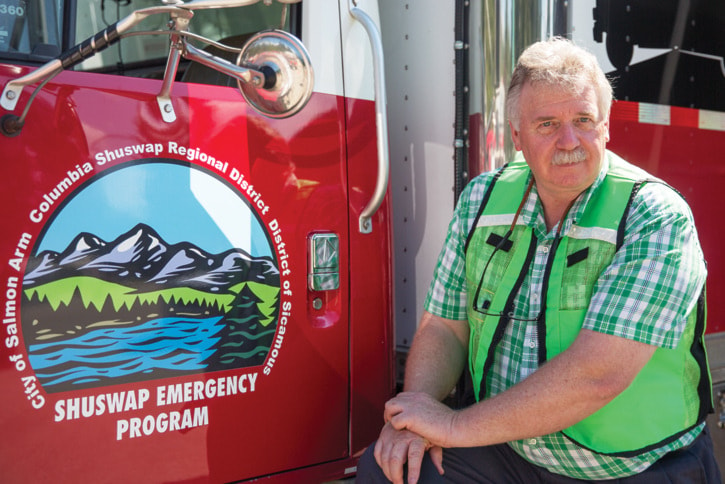Be Prepared is not just a Boy Scout motto.
Weather the weather brings heavy rains and flooding or hot, dry winds that elevate wildfire risk, the Shuswap Emergency Program has a plan for that.
“The Wildfire Management Branch is suggesting if we don’t get any rains in June, there’s a greater than average risk of wildfires,” says Cliff Doherty Columbia Shuswap Regional District’s emergency program co-ordinator.
The Shuswap Emergency Program (SEP) operates in the City of Salmon Arm, District of Sicamous and electoral areas of CSRD that surround Shuswap Lake – South Shuswap, Falkland/Salmon Valley/Ranchero and North Shuswap.
“Our main role is not only responding when something happens, but also emergency preparedness,” he says. “Our biggest role is activation of an emergency centre.”
In the event an emergency operations centre (EOC) is activated, there are roles for volunteers and government staff, along with police, fire and ambulance who will go to emergency centre to help support people working there.
“Our greatest effort is setting up a declaration of a state of local emergency and doing up the paperwork for an evacuation order,” says Doherty. “That’s the high end of what we do. At the low end, it could be arranging portable toilets or barricade – whatever the site requires.”
Emergency preparedness is another role SEP plays.
“I really think there is a need for the public to be better prepared,” he says. “For our part, the emergency program is right now exercising and training our staff just in case we need to set up an EOC.
SEP was in attendance at the Sicamous Safety Fair on the weekend and Doherty is very excited about a training exercise that will take place in Silver Creek on June 27 and will include Emergency Support Services (formerly Emergency Social Services) and CDART, the Canadian Disaster Animal Response Team.
“The premise is people being evacuated with pets… we just want to hone and practise,” he says.
An emergency evacuation course for the agencies and emergency program staff that would be involved in building an evacuation plan if needed will be held June 22.
“SEP is very much aware of the areas around the lake that have one main road in and one main road out,” Doherty says. “Evacuation planning does include the other alternatives to move people away from the area if that main road is blocked.”
For example, SEP officials have a 24-7 connection to the houseboat companies if that is a resource that is needed.
A workshop for personal and neighbourhood preparedness will take place at 7 p.m. June 9 at Shuswap Lake Estates. The workshop will last for about one hour, followed by another half-hour question-and-answer session.
Another Neighoburhood Emergency Preparedness Program (NEPP) will take place at 7 p.m. at White Lake Community Hall on June 10.
Doherty suggests interested citizens may find more information at the PreparedBC website.
For example, the PreparedBC: Household Preparedness Guide has information on such things as building an emergency kit, gathering items and identifying a safe meeting place.
